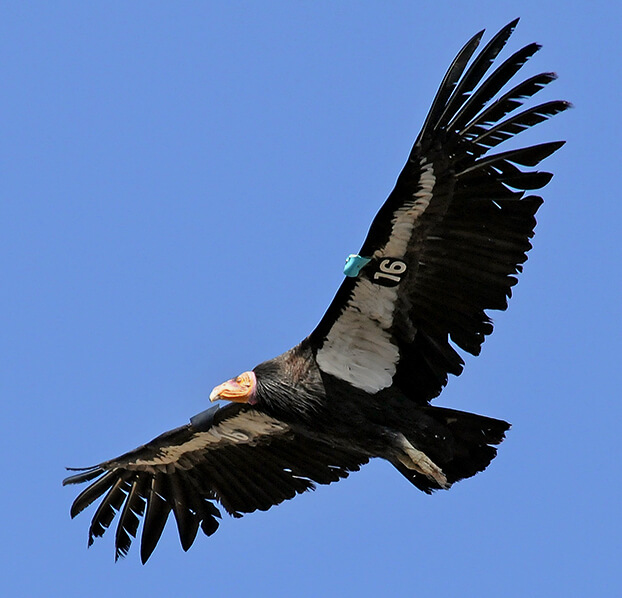
Species Information
California Condor

| Status |
Endangered Species : species that have a very small population and are at risk of extinction in the wild. |
| Family |
Cathartidae (New world vultures) |
| Description | A bald reddish-orange head and body of dark feathers |
| Habitat | Remote areas with steep cliffs, canyons, and open woodlands |
| Food | Carnivore |
| Reproduction | One egg every other year |
| Threats | Habitat loss and lead poisoning |
| Range | North America |
The majestic California Condor is famous worldwide not only for their giant size, adults have a nine-foot wingspan and weigh more than 20 pounds, but for their close brush with extinction. In the 1980’s only 27 birds remained alive, even after protective efforts were implemented. California Condors declined over hundreds of years due to humans encroaching on their habitat, reducing their food supply, and the birds consuming carrion contaminated with poison and lead. The species was so close to extinction that every last California Condor was captured from the wild to be closely monitored and bred in captivity. Female condors lay only a single egg in a nesting season, which upon hatching is cared for by its parents for up to a full year and reaches maturity between six and eight years of age. Due to the slow reproductive rate, breeding the California Condor in captivity necessitated a careful and patient program in which indigenous groups, scientists and governmental agencies all participated. The success of the captive breeding program is renowned and as of 2021 there are more than 530 California Condors, many thriving once again in protected wild habitats.
You can see these enormous birds yourself flying at incredible heights in California, Utah, Arizona, and Baja California. California Condors soar very high, sometimes not beating their wings for hours as they glide on air currents reaching speeds of 30-55 miles per hour. The large dark brown bird feeds exclusively on carrion such as dead deer, sheep, and cattle. When food is scarce, they’ve been known to go without eating for up to two weeks, and when they find food again, they can store several pounds in their crop. Because they feed on dead animals, including animals that have been shot and killed by hunters, lead poisoning is currently a significant risk to the wild population. Since their population is still very vulnerable, each bird is tracked and monitored, which is why the birds wear noticeable tags on their wings when spotted in the wild. Agencies, non-profit and private groups continue to work diligently to bring these special birds back from the brink of extinction and their success story is worth sharing so we can continue to share our state with the giant California Condor.
